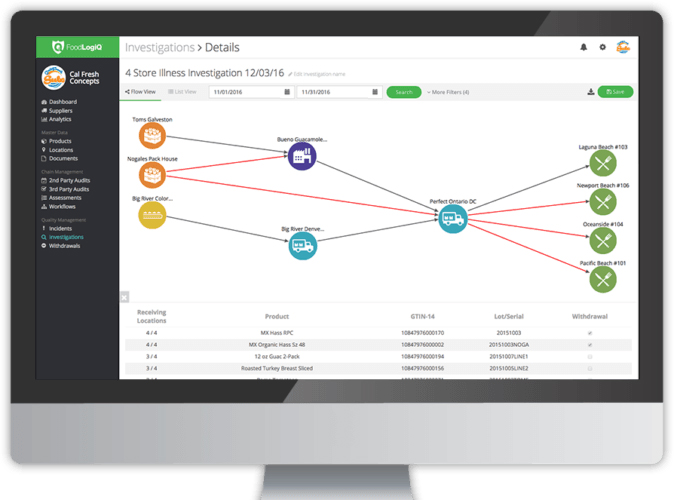Inventory management can be a challenge for restaurants. Stock often moves quickly, many ingredients have short shelf lives and limited storage space can make it easy to overlook some items. Manual tracking methods fall short of modern establishments’ needs, but technology offers an answer.
Inventory management software has made waves in warehousing and logistics, but the food and beverage industry can capitalize on it, too. Restaurants already recognize the need for tech adoption, with 100% of surveyed establishments increasing their urgency to adopt transformational technologies. Inventory tracking solutions should be part of that trend.
This article reviews how inventory management technology can improve restaurants.
Preventing Food Waste
One of the most important parts of inventory management is reducing waste. Up to 10% of food restaurants buy is thrown out before it ever reaches the consumer. Part of this comes from wasteful preparation practices, but much of it results from improper storage.
Inventory tracking technology addresses this issue by increasing stock visibility. In a traditional setup, restaurant employees may not be able to see what they have on hand, causing them to overlook items and leave them until they expire. Tracking technologies provide real-time data about everything in storage and consolidate it into a single, easily accessible window.
Many inventory software solutions include expiration date tracking, alerting workers when something is about to expire. They can use these technologies to find the product in question and use it before it goes bad. Trends over time can reveal if restaurants order too much of one item, driving managers to buy less to prevent waste-causing surpluses.
Avoiding Stock Shortages
Similarly, inventory management solutions can help avoid product shortages. Since the items restaurants order typically don’t go directly to the consumer, it can be difficult to understand stock levels in real-time. The visibility inventory tracking systems provide counteracts that.
Inventory software solutions can maintain real-time inventory data and alert managers when levels get low. They can then order more of a product before they run out, maintaining higher customer satisfaction. Perhaps more importantly, as restaurants use these systems over time, they can highlight seasonal trends to create more accurate forecasts.
Inventory trends will reveal how items grow and shrink in demand at various times of the year. Restaurants can then plan to order more or less of those products at different times according to those trends, avoiding shortages from under-ordering in-demand items.
Consolidating Multiple Sales Channels
Selling through multiple channels can make it more difficult to track inventory levels. Restaurants may use separate systems to manage online and in-person sales, which can lead to confusion and miscommunication.
Inventory management solutions can track online and retail sales together through a single platform. That way, restaurants have a consolidated view of all sales and history, eliminating the miscommunication that arises with traditional methods. Establishments that use a single system for all channels won’t accidentally sell out-of-stock items.
This consolidation also helps refine seasonal adjustments. Online sales trends fluctuate just as they do in person, but there may be some differences. Managers that look at seasonal trends across both channels can adjust their ordering schedules more accurately, further preventing stock shortages.
Highlighting Potential Issues
Restaurants can also use these technologies to review trends over time and highlight persistent issues. Inventory software may reveal that an establishment consistently loses one product because it passes its expiration date. This suggests that it orders too much of it at once, so it can start buying less to adapt.
Similarly, trends can reveal if something is wrong with the restaurant’s storage solution itself. Data could show if ingredients in one refrigerator consistently expire despite accurate ordering figures, suggesting the fridge fails to maintain a safe temperature. These situations are likely and deserve attention, considering that foodborne diseases cause 48 million illnesses a year, according to CDC estimates.
The longer restaurants use these technologies, the more data they’ll have, generating a growing information pool can then inform increasingly precise and reliable forecasts and mitigation strategies.
Calculating Accurate Profit Margins
Another overlooked benefit of inventory management technology is its utility as a financial planning tool. As much as 75% of restaurants struggle financially due to food costs. They may not be able to control ingredient prices, but they can manage them better with accurate inventory data.
Food prices fluctuate rapidly, leading to uneven profit margins. Restaurants that don’t have a granular picture of how their inventory moves won’t be able to calculate their profit margins accurately. Inventory management solutions provide a more granular look into stock levels and offer the context managers need for these calculations.
Inventory tracking technology allows restaurants to view stock movements weekly or even daily to compare with fluctuating prices. This specificity will help get a more accurate picture of expenses and profits.
Inventory Management Tech is Essential
Restaurants must become more financially agile to stay afloat amid widespread disruptions. Inventory management systems offer the insight and control they need to refine their processes, enabling that flexibility, and helping them adapt to incoming changes to ensure future success.









